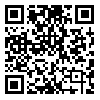

 , Meimanat Hosseini *
, Meimanat Hosseini * 

 2, Nezhat Shakeri3
2, Nezhat Shakeri3 

 , Tahereh Ashktorab4
, Tahereh Ashktorab4 

 , Sima Zohari Anbouhi5
, Sima Zohari Anbouhi5 


2- Assistant Professor, Dept. of Community Health Nursing, School of Nursing and Midwifery, Shahid Beheshti University of Medical Sciences, Tehran, Iran ,
3- Assistant Professor, Dept. of Community Health Nursing, School of Nursing and Midwifery, Shahid Beheshti University of Medical Sciences, Tehran, Iran
4- Professor, Dept. of Medical Surgical Nursing, School of Nursing and Midwifery, Shahid Beheshti University of Medical Sciences, Tehran, Iran
5- Assistant Professor, Dept. of Medical Surgical Nursing, School of Nursing and Midwifery, Shahid Beheshti University of Medical Sciences, Tehran, Iran
Background & Aim: Restless legs syndrome (RLS) is a sensorimotor disorder that is frequently observed in patients with multiple sclerosis. This study aimed to determine the effect of stretching exercises on the severity of restless legs syndrome symptoms in patients with multiple sclerosis.
Methods & Materials: This quasi-experimental study with control group (IRCT2016041627427N1) was conducted on 60 patients with multiple sclerosis (30 in the intervention group and 30 in the control group) referred to the multiple sclerosis society of Kermanshah in 2015. “The demographic questionnaire”, “the symptoms of restless legs syndrome and their severity”, and “exercise recording form” were used to collect the data. The intervention group was taught the correct way to exercise during four half-hour sessions. The severity of RLS symptoms was measured before the intervention and the end of the fourth and eighth weeks. Data were analyzed by descriptive and inferential statistics using SPSS software version 20.
Results: Before the intervention, the mean score for the severity of RLS symptoms was respectively 19.08±8.12 and 17.42±5.24 in the intervention and control groups (P=0.569). One month (P=0.002) and two months after the intervention (P<0.001), the score was changed to 9.70±5.24 and 7.08±4.08 in the intervention group and 17.61±5.31 and 17.92±5.52 in the control group.
Conclusion: Stretching exercises can improve the severity of RLS symptoms in patients with multiple sclerosis. Therefore, the stretching exercises program is recommended for this group of patients.
| Rights and permissions | |
 |
This work is licensed under a Creative Commons Attribution-NonCommercial 4.0 International License. |
